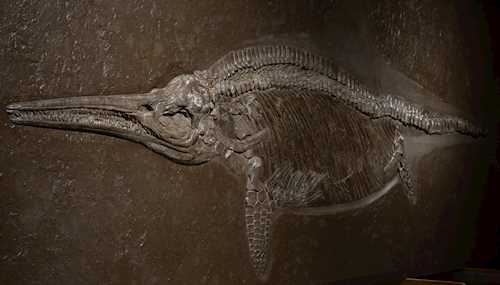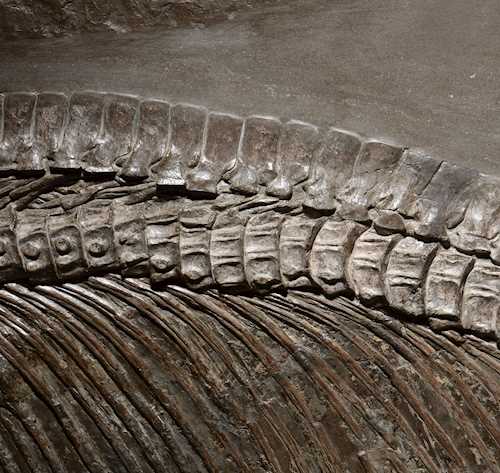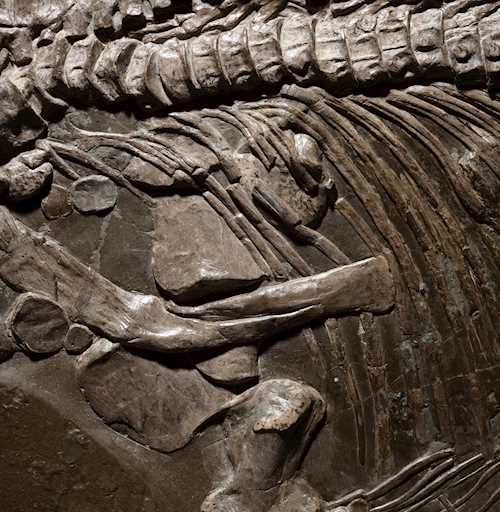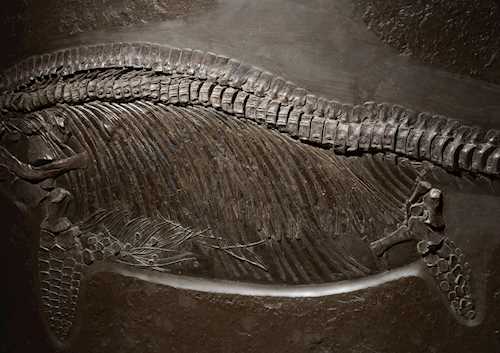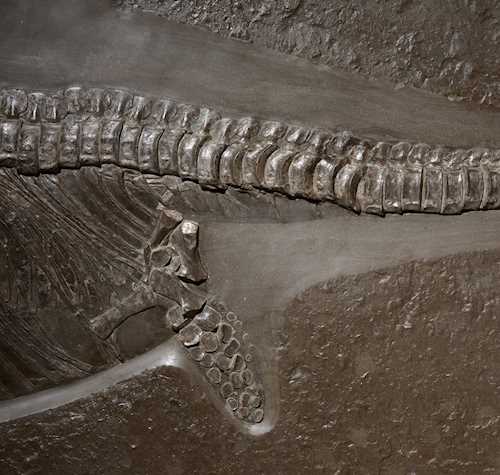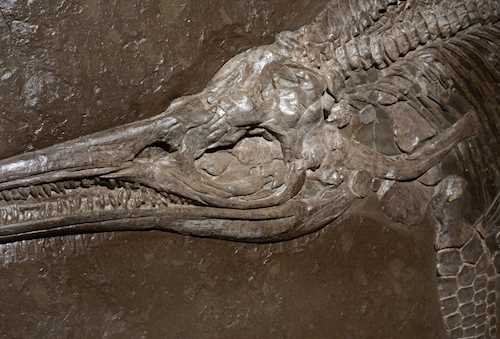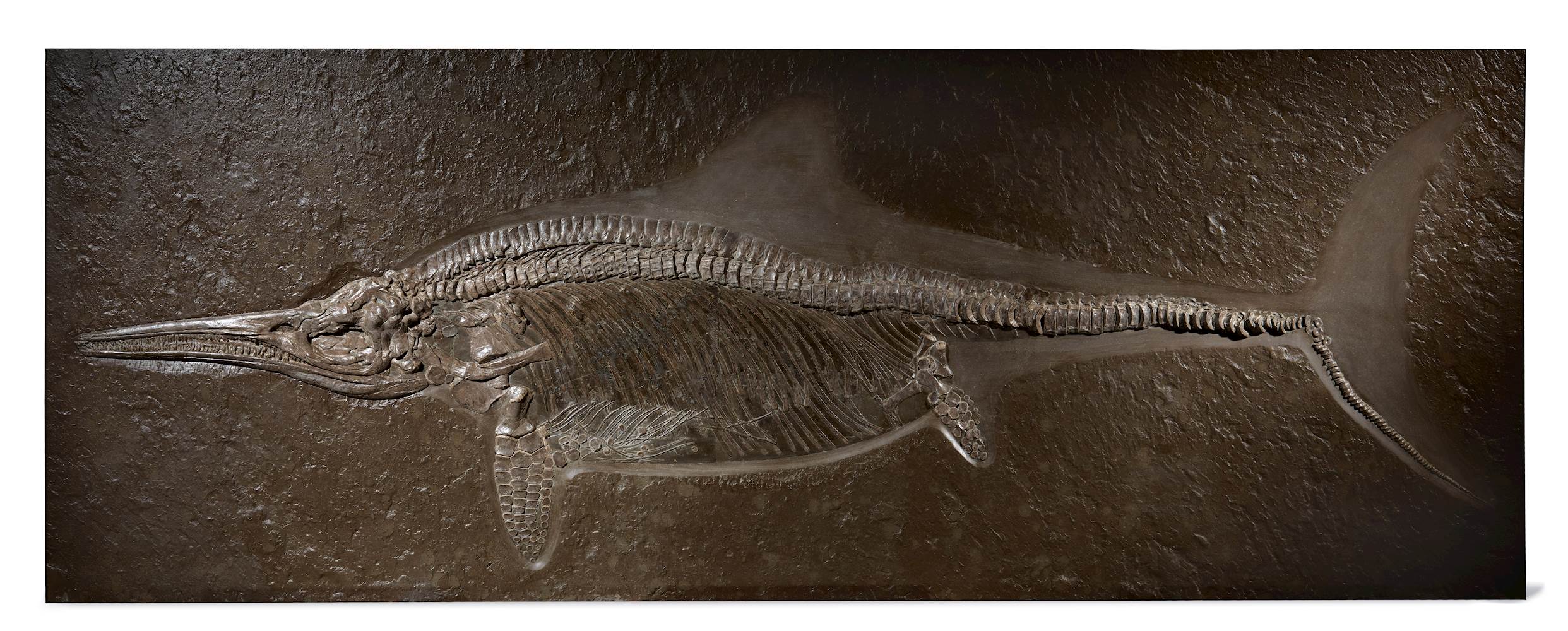
拍品 4070* - A211 Out of This World - Dienstag, 03. Dezember 2024, 05.00 PM
ICHTHYOSAUR IN MATRIX
Stenopterygius quadriscissus
Jurassic, Toarcian, possibly Lias Epsilon II/3, Fleins
Circa 180 million years
Holzmaden, Germany
Excavated in the 1970s
Matrix: 280 × 105 × 4.5 cm
Fossil: circa 265 cm
Weight: circa 280 kg
Jurassic, Toarcian, possibly Lias Epsilon II/3, Fleins
Circa 180 million years
Holzmaden, Germany
Excavated in the 1970s
Matrix: 280 × 105 × 4.5 cm
Fossil: circa 265 cm
Weight: circa 280 kg
Provenance: Private collection, southern Germany
Ichthyosaurs lived in the Mesozoic over a period of more than 150 million years and became extinct about 90 million years ago, which means that they were about 30 million years older than even the dinosaurs.
The name ichthyosaur comes from the Greek, meaning ‘fish lizard’. This ancient group of reptiles originally descended from land lizards and only later became aquatic, marine organisms. Their bodies show a strong resemblance to those of sharks and dolphins.
With its fish-like body, streamlined for aquatic life, the ichthyosaur is assumed to have been an exceptional swimmer, reaching depths of more than 1 000 metres. Due to the size of its eyes, the reptile is said to have possessed a visual range of 500 metres underwater. The annular sclerotic ring, a bone structure bounding the eye, protected and supported it from pressure and speed while swimming and diving. Since they were still in need of air to breathe, the reptiles had to surface often.
The specimen presented here is a complete adult ichthyosaur in a natural matrix of fracture-rough Posidonia shale. The bones are in their original combination, coming from a single animal, which justifies its scientific value. No efflorescence is recognizable, and a stable continued existence is predicted.
The skull is completely preserved, and the teeth are exposed. The front and rear paddles are also completely preserved, as is the caudal fin. All bones are very plastically formed, sparking one’s imagination of how this ancient sea creature might have appeared.
This fossil is impressive because of both its imposing size and overall fantastic preservation.
It comes with an expert report from Fossiland and wall mounting.
Ichthyosaurs lived in the Mesozoic over a period of more than 150 million years and became extinct about 90 million years ago, which means that they were about 30 million years older than even the dinosaurs.
The name ichthyosaur comes from the Greek, meaning ‘fish lizard’. This ancient group of reptiles originally descended from land lizards and only later became aquatic, marine organisms. Their bodies show a strong resemblance to those of sharks and dolphins.
With its fish-like body, streamlined for aquatic life, the ichthyosaur is assumed to have been an exceptional swimmer, reaching depths of more than 1 000 metres. Due to the size of its eyes, the reptile is said to have possessed a visual range of 500 metres underwater. The annular sclerotic ring, a bone structure bounding the eye, protected and supported it from pressure and speed while swimming and diving. Since they were still in need of air to breathe, the reptiles had to surface often.
The specimen presented here is a complete adult ichthyosaur in a natural matrix of fracture-rough Posidonia shale. The bones are in their original combination, coming from a single animal, which justifies its scientific value. No efflorescence is recognizable, and a stable continued existence is predicted.
The skull is completely preserved, and the teeth are exposed. The front and rear paddles are also completely preserved, as is the caudal fin. All bones are very plastically formed, sparking one’s imagination of how this ancient sea creature might have appeared.
This fossil is impressive because of both its imposing size and overall fantastic preservation.
It comes with an expert report from Fossiland and wall mounting.
CHF 40 000 / 60 000 | (€ 41 240 / 61 860)


